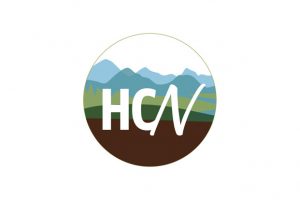Returning to Activity After COVID-19
COVID-19 infections have become a common occurrence during the last two years that this pandemic has been ongoing. For those individuals who only have mild symptoms the recovery process is generally straightforward and they may soon find themselves feeling ready to get back into activities and sports. The question is, what steps should you follow in order to make sure you are physically ready, and why is that even necessary?
Viral infections that cause flu-like symptoms always have the potential to cause myocarditis, and the SARS-CoV-2 virus is no exception. Myocarditis is an inflammation of the heart muscles, and can lead to heart damage if not handled properly. Symptoms of myocarditis can include shortness of breath, chest pain, irregular heartbeat, and inability to exercise. If an individual has myocarditis and exercises, there is the potential that they can increase viral production, accelerating disease progression and heart damage. If cardiac involvement is suspected following a positive COVID-19 infection, it is recommended that a thorough evaluation is performed by a physician before beginning any physical activity.
The COVID-19 virus also causes inflammation in the lungs, which can affect respiratory function even after symptoms have decreased at rest. Typically respiratory symptoms should improve in a progressive manner, and be resolved by 4 weeks. If you are still experiencing difficulty breathing or a persistent cough with vigorous exertion, or if progress begins to decrease and a new productive cough develops, it is imperative to seek further respiratory evaluation by a physician.
Individuals who had severe symptoms of COVID-19, were hospitalized because of it, have any pre-existing cardiac or respiratory conditions, who are experiencing Long COVID-19 symptoms, or who have other complicating health factors; must have a thorough medical assessment before beginning any return to activity protocols. As well, if you are just starting exercise for the first time, you should seek guidance from your doctor.
So, if there are no concerns about cardiovascular impairment, the next step is determining when and how to begin a return to play protocol. In an article published in the British Journal of Sports Medicine in 2020 by Elliott et. al., the authors outline a graduated return to play protocol for performance athletes. This protocol has been widely adopted in Canada by high performance programs, post-secondary athletics medical staff, and others. It is aimed at performance athletes, but is adaptable to recreational athletes as well. They recommend that in order to begin the process you must be at least 10 days from the onset of your symptoms, have been symptom-free for 7 days, and must be off of all medication that was required during the course of active infection. As well, you must be able to perform all your activities of daily living and walk 500 metres on the flat without excess fatigue or breathlessness.
A graduated return to play plan is a stepwise process that requires you to be aware of how you are feeling during each activity, as well as monitoring yourself for symptoms for 24 hours after. If the activity is tolerated well, and no symptoms arise after activity, then you can progress to the next step. You will need to be aware of your rate of perceived exertion, muscle soreness, fatigue, stress, sleep, and your perceived readiness to return to sport, plus any subjective symptoms that you experience. If you do not respond well to a certain stage it is recommended that you return to the previous stage and progress again after 24 hours symptom-free.
Here is the basic outline of the protocol:
Stage 1: This is the first 10 days following onset. It involves walking and activities of daily living.
Stage 2: This begins after you have been symptom free for 7 days. You repeat this stage for 2 days. It includes walking, light jogging, or stationary biking, with no resistance training at <70% max HR for 15 minutes or less. (You can estimate your maximum heart rate (max HR) by subtracting your age from 220. So if you are 42, your estimated maximum heart rate is 178. 70% of that would be 125 beats per minute.)
Stage 3A: This stage is one day and involves doing simple movement activities (sport-specific drills etc.), at <80% max HR for 30 minutes or less.
Stage 3B: Also just 1 day, and here you can progress to more complex drills and activities, again at <80% max HR for
45 minutes or less.
Stage 4: Repeat this one for 2 days as well, and now you can progress to normal training activities, still at <80% max HR for 1 hour or less.
Stage 5: resume normal training progressions
The goal of this protocol is to allow time for recovery in between stages, gradually increase the training load, manage any post-viral fatigue symptoms, work on coordination and skills and increase confidence. If you are unsure about whether or not it is safe for you to begin a return to activity process please consult with a physician first. If you have been cleared to begin exercise again and need help with figuring out the first or next steps, the therapists at Bragg Creek Physio would be happy to help you out. Here is to recovering well, and getting back safely to the activities that you love!
Susie MacPhee, BKin, CAT(C)
Certified Athletic Therapist
Bragg Creek Physiotherapy
www.braggcreekphysio.com

























